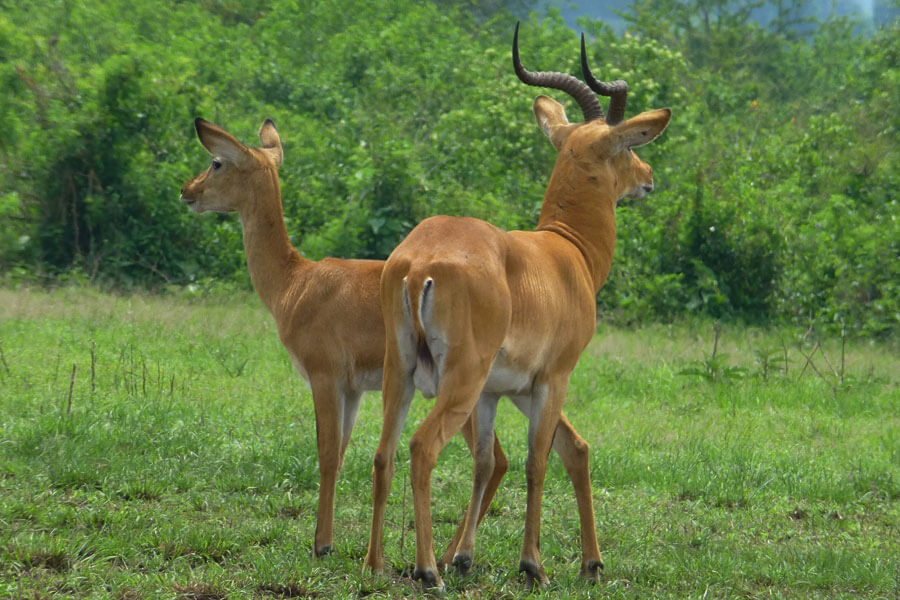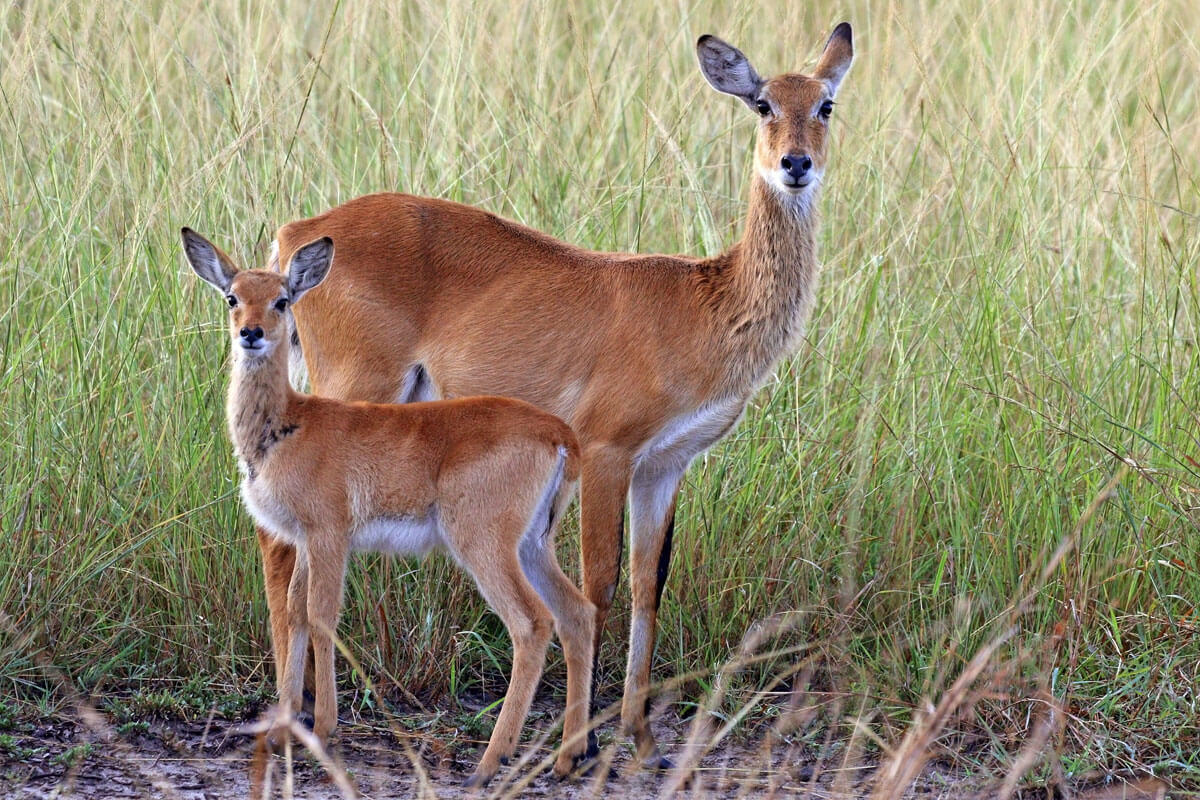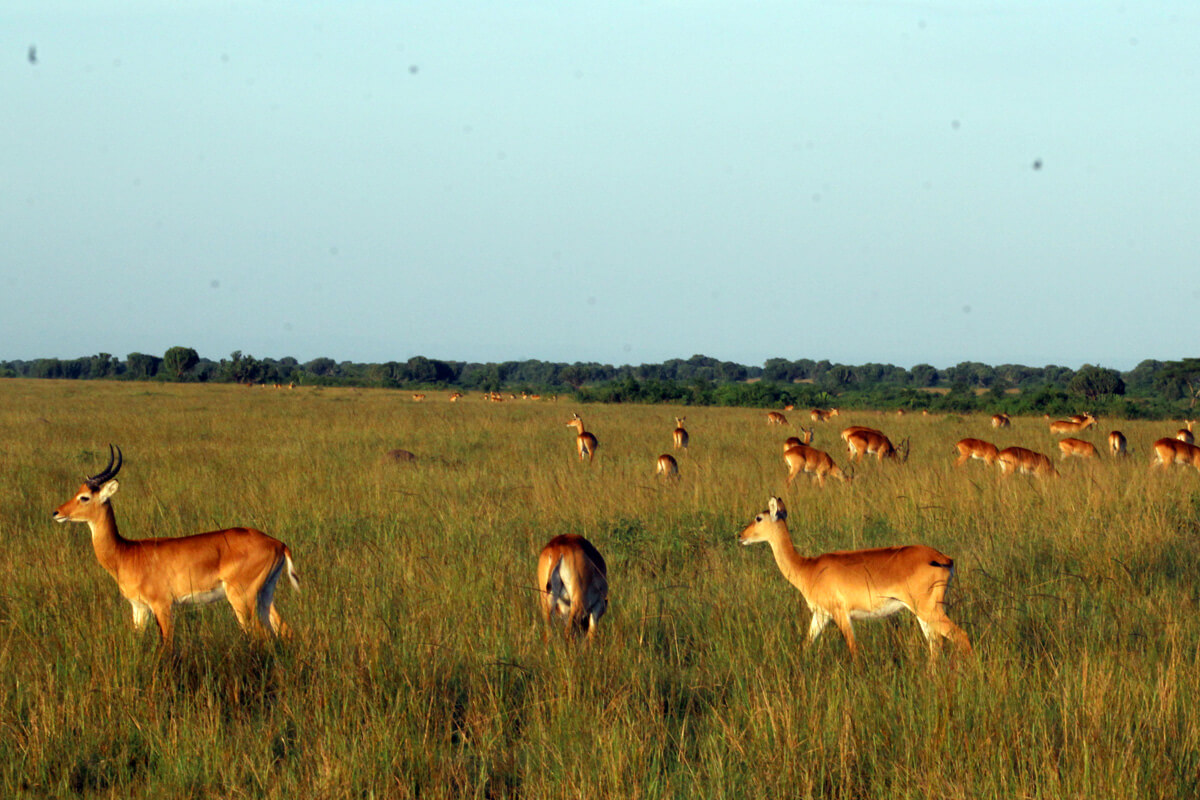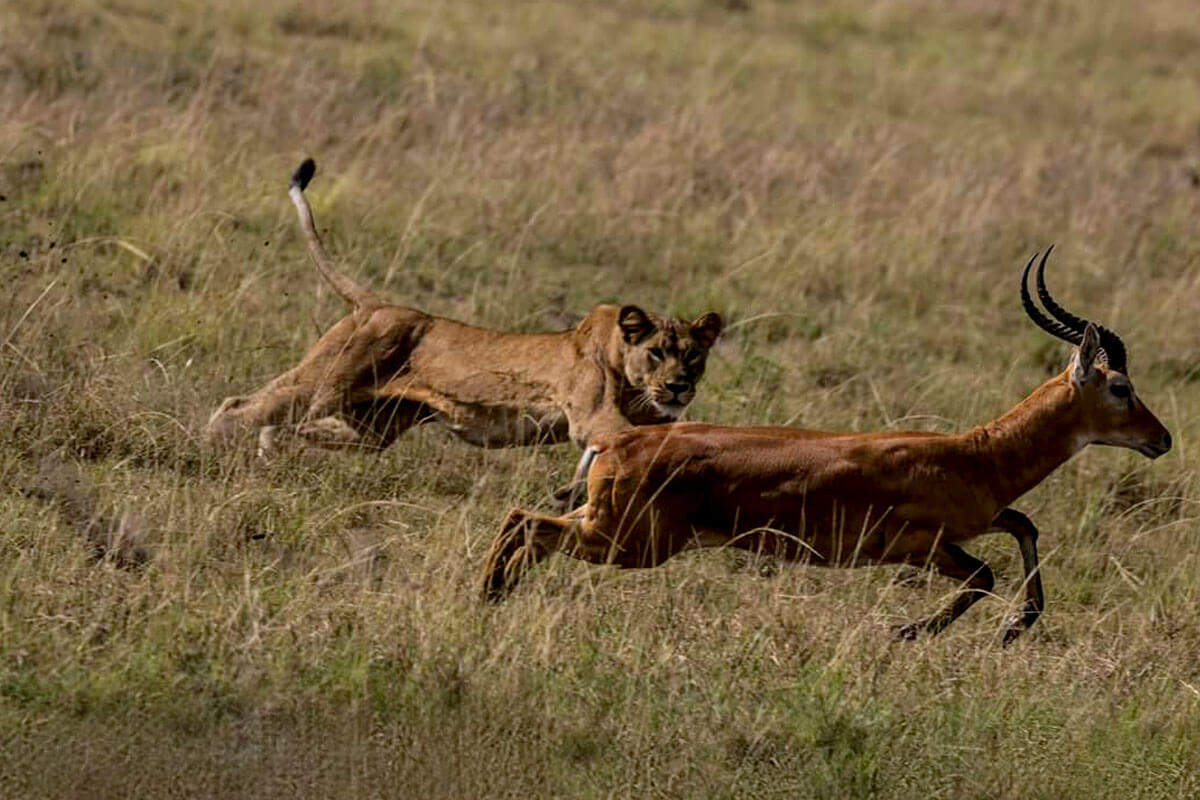The Ugandan kob (Kobus Kob Thomasi) is a subspecies of the kob antelope found in South Sudan, DRC and Uganda.
The Uganda kob is the national animal of Uganda and is represented on that national coat of arms and in the logo of the Uganda Wildlife Authority. On the Uganda coat of arms, the job is meant to represent the abundant wildlife present in the country.
In this article, we'll look at some interesting facts about this antelope that appears on every government document and piece of money in Uganda. We'll look at their diet, habitat, social behaviour, and more.
Facts About Uganda Kob
1. How Does The Uganda Kob Look Like?

The Uganda kob resembles the impala antelope but is more sturdily built. The Ugandan kob looked golden-brown and the colour is a distinguishing feature from other similarly sized antelope.
The belly and inside legs of the Uganda kob are white and the white patches are also present on the throat and inner ears.
2. How Big Is A Ugandan Kob?
Uganda kobs are medium-sized antelopes that can grow to a shoulder height of 1 meter (3.3 feet) at the shoulder and an average weight of around 90 kilograms (200lb)
Male Uganda kobs are bigger than their female counterparts and often weigh about 25 per cent heavier.
| UGANDA KOB | AVERAGE HEIGHT | AVERAGE WEIGHT |
|---|---|---|
|
3 to 3.3 feet | 94 kilograms |
|
2.7 to 3 feet | 63 kilograms |
3. Where Do Uganda Kobs Live?
The Natural habitat of the Ugandan kob is in the open and wooded savanna of East Africa. Uganda kobs can be found within a reasonable distance from water bodies such as rivers and lakes.
Uganda kobs in the world can be found in Uganda, South Sudan - west of the Nile, and the Northeastern Democratic Republic of Congo.
The original habitat once extended to northern Tanzania and southwestern Kenya but Uganda kobs no longer exist in these areas.
4. What Do Ugandan Kobs Eat?
Ugandan kobs are herbivores that eat grasses and reeds for their survival. Kobs like to feed near a water source and will at times migrate very long distances to places with a water source.

5. How Do Uganda Kobs Reproduce?
Female Uganda kobs give birth to one offspring (calf) after a gestation period of around 9 months. New calves are often born at the end of the rainy season in the months of November and December.
The calf is weaned at around 6 months. Female Uganda kobs become sexually mature in their second year but males need to be a bit older.
6. How Long Do Uganda Kobs Live?
Ugandan kobs can live long lives up to 17 years in the wild. As the main food for most resident predators, Uganda kobs can live longer than lions, leopards, or cheetahs.
As with all animals in the wild, the younger stages are riskier due to predators. In each specific area of the savannah - even if it is in the same national park - the other prevailing conditions play a role in how long the Uganda kobs (and other antelopes) will live. Kobs that live close to humans might not get killed by lions but could fall victim to the occasional poacher.
Related article: Comparing the lifespan of African animals in the wild
7. Are Uganda Kobs Social?
Uganda kobs live in groups called herds. The herds can be made up of males and females with their calves.
Males are more territorial and live in bachelor herds, often near the lek/breeding grounds. Females are more social than males and can form herds of up to 40 animals, and sometimes more than 100 animals.
Male Uganda kobs make soft noises and whistle through the nose as a way of getting a female to stay and become part of the herd.

8. What Is A Lek (Breeding Ground)
Ugandan kobs have permanent breeding grounds where mating takes place. The breeding areas are called leks.
On these grounds, male kobs engage in competitive displays and courtship rituals as a way of enticing females who are looking for mating partners.
Within a lek, more than 20 male Ugandan kobs defend territories of 15 to 200 meters in diameter each.
9. What Kills Uganda Kobs
The small to medium size of the Uganda kobs makes them a perfect target for the resident predators. Uganda kobs are killed by lions, leopards, cheetahs, Nile crocodiles, pythons, and poachers.
Since they live in protected national parks and game reserves, the Uganda kob is protected from poaching but they still succumb to the other animals. The young calves and very old are the usual culprits since they aren't as strong and nimble to escape every predator.

10. How Do Ugandan Kobs Protect Themselves?
Ugandan kobs protect themselves from predators by running. The kobs are very aware of their surroundings and easily detect the presence of a predator and run away.
They live a life of 'survival of the fittest' where they have to outrun any predator or become food.
12. How Fast Is A Ugandan Kob?
There is no research record of the running speed of the Ugandan kob. Given that most animals are closer in speed to their predators, we guess that a Ugandan Kob is close to the running speed of a zebra at around 60 kilometres per hour.
This is slower than a lion or a cheetah but around the same speed as a hyena.
13. Are Ugandan Kobs In Danger?
According to the IUCN (International Union for the Conservation of Nature) the Uganda kob is regarded as of Least Concern. This means that it is not under any imminent threat of extinction.
Final Thoughts
For people in Uganda, the Ugandan kob means much more and is represented on every government document and money, as a representation and reminder of the natural abundance of wildlife in the country.
For visitors, these animals will welcome you to all the savanna parks and seeing them go about their day is quite satisfying.
While the Uganda kob is abundant in Uganda's national parks, the fact that these antelopes have a limited range is quite strange.
